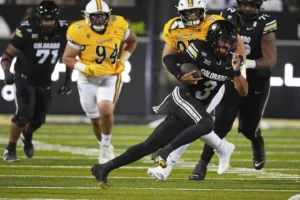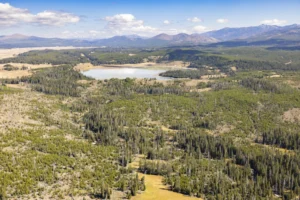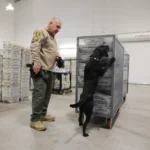FRIDAY FOCUS: Cheyenne Little Theatre Players’ Leader Sees Light After the Pandemic
Sara Serelson on the importance and magic of community theater
- Published In: Other News & Features
- Last Updated: Aug 04, 2023
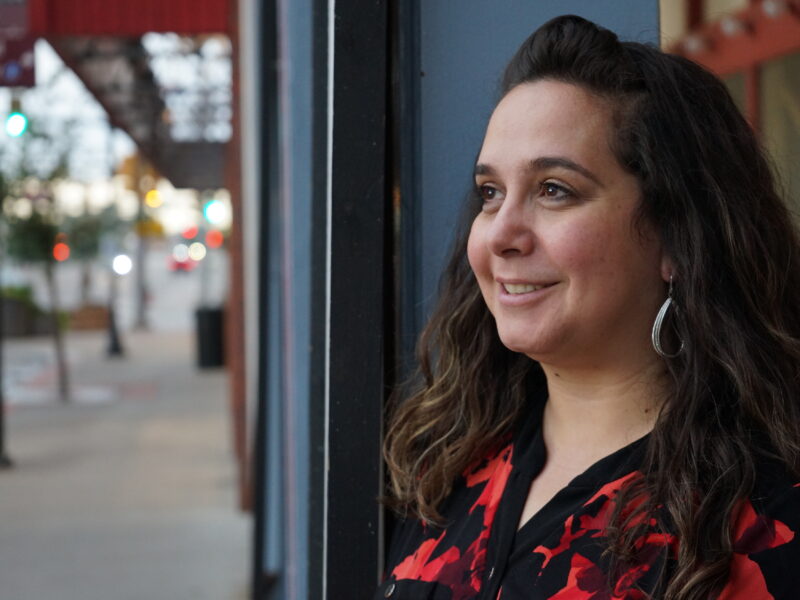
Sara Serelson is board president of the Cheyenne Little Theatre Players, a nonprofit that performed its first slate of one-act plays in 1930. (Wyoming Truth photo by David Dudley)
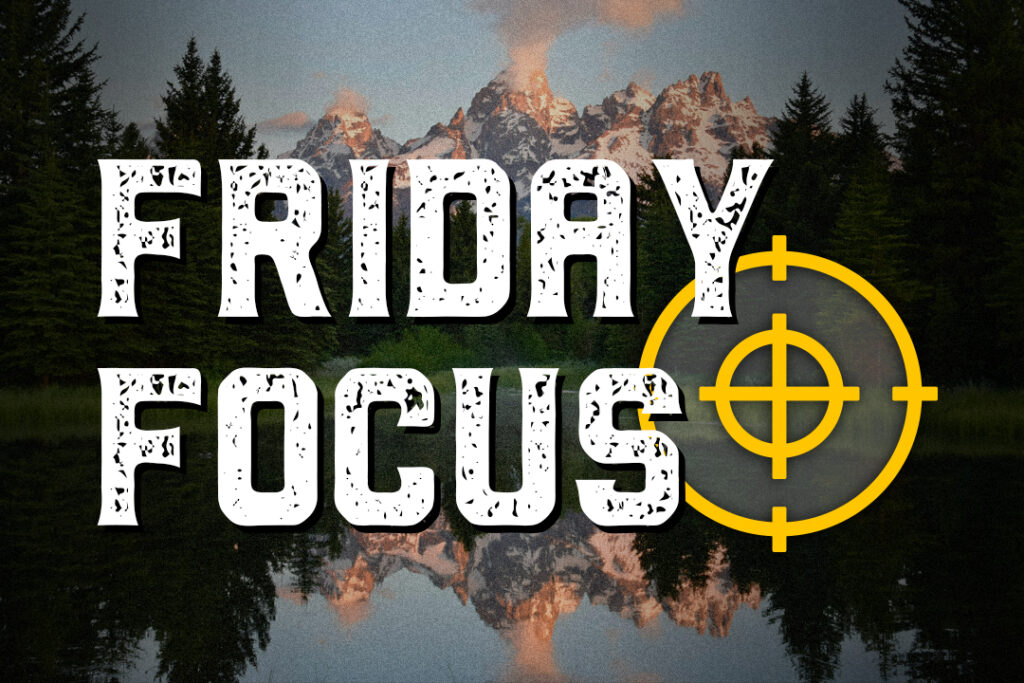
By David Dudley
Special to the Wyoming Truth
The performing arts world was turned upside down three years ago, when the COVID-19 pandemic forced businesses across the U.S. to close temporarily.
The challenge for theaters—the spaces shared by actors, crew, staff and audiences during the performance of live plays and musicals—is that they are by definition community gathering places. But during the pandemic, performances were called “super spreader events.”
Sara Serelson, board president of the Cheyenne Little Theatre Players (CLTP), a nonprofit that performed its first slate of one-act plays in 1930, has wrestled with that situation for the past three years.
While other businesses like retail stores and restaurants are seeing their revenue reach pre-pandemic levels, audiences have been slow to return to theaters like CLTP. The troupe works with a mixture of stage veterans and amateurs, and its seasons typically span six shows, including comedies, dramas, musicals and shows for children. There’s an annual New Year’s Eve performance, a “Rocky Horror Picture Show” shadow cast event and various fundraising performances.
“We’ve been trying to define, and re-define, what community theater is,” said Serelson, who joined the board in 2017 and became president last year. “More than anything else, it’s about people of all ages and cultures coming together to make, and see, something beautiful for the community.”
Serelson, a 41-year-old single mom of three, graduated from Central High School in Cheyenne, where she was a “speech and debate kid.” She earned a bachelor’s degree in human services and a master’s degree in psychology from the University of Phoenix. Inspired by her mom, Carol, an actor, Serelson has been involved with CLTP in myriad capacities — stagehand, stage manager, usher, carpenter, fundraiser — since joining the company as a volunteer in 2005.
This weekend, CLTP prepares to wrap its 67th consecutive “Old-Fashioned Melodrama,” the theater’s flagship show. Melodramas are plays populated with exaggerated characters — the mustache-twisting villain, damsel in distress or virtuous hero — who are involved in larger-than-life plots intended to evoke emotion. As in traditional melodramas, CLTP punctuates the dramatic scenes with musical numbers, direct address, audience participation and Old West flavor. CLTP performs the show annually during Cheyenne Frontier Days.
“I’m proud of the resiliency we’ve shown,” said Serelson, executive director of the Wyoming Children’s Trust Fund. “I’m proud of the work we’ve done to keep putting on shows to bring the community together.”
The Wyoming Truth spoke with Serelson about a doomed production, the need for community theater and what the future may bring. What follows are excerpts from that conversation.
Do you remember the moment you knew the pandemic would impact Cheyenne Little Theatre Players?
Serelson: Yes! We had just completed opening weekend for a production of “The Wind in the Willows.” When we got the notice that we had to shut down, we thought that we’d be able to finish the show’s run. They did their first weekend, and then the board told them they could not go on until further notice. There were a lot of children who were devastated to lose out on that experience. They’d auditioned, rehearsed, memorized their lines and blocking, made friends with castmates, and all that.
We held onto the hope that we’d be able to resume the show “next week.” We left the set up, and the ghost light on, for about four months. (A ghost light is an electric bulb that’s left on near centerstage when the theater would otherwise be unoccupied and dark.)

What did that mean for the theater?
Serelson: It was very hard for our community. We all depend upon that collaboration, the actor-audience interaction. Also, we had a full season lined up with large-cast shows, which provide more opportunities for people to get involved, and better ticket sales.
When we were finally allowed to re-open, we had to pivot to shows that required just one or two actors.
Which generally means smaller audiences.
Serelson: Right. If you sell tickets to a show with 25 children, as opposed to two adults, you have a very different turnout in your audience.
It’s a big deal for families to come and support their children who are acting. Everybody comes to see their friends, their neighbors. They bring in more people because there are more connections to the community. The more people that are present, the greater the exchange of energy between audience and performers. That’s really where the magic of the theatre is.
I understand this is the 67th consecutive “Old-Fashioned Melodrama.” Did the theater perform the “Melodrama” in 2020?
Serelson: Yes! Cheyenne Frontier Days was canceled in the summer of 2020, but we still performed the “Old-Fashioned Melodrama” at the Historic Atlas Theatre. It’s “the show that COVID couldn’t cancel.” The cast that year had to wear masks and always stay six feet apart.
It’s a major undertaking that we do each year for local audiences, as well as those who visit for Cheyenne Frontier Days. The “Melodrama” is locally written. . . . Those from Cheyenne really understand the hidden pieces of humor that go throughout a little differently than those who are not from here. This one was written by a local writer named Lou Burton. We perform two shows a night, 7 p.m. and 9 p.m., which is 26 performances. They begin the weekend before Frontier Days and run through the weekend after. It also kicks off our fiscal year. So the revenue we generate from the “Melodrama” funds the rest of the season.
What is your operating budget for this season?
Serelson: Before COVID, we averaged about $550,000. During the pandemic, it was closer to $340,000. Our projected budget for this year is $400,000. Of that, $215,765 should be ticket sales; $64,000 is from concessions; $34,100 from donations; $34,375 from our Youth Summer Stock program tuition; and $55,600 from fundraising events.
What’s the hardest part about staging the “Melodrama?”
Serelson: For the past couple of years, the cost of paint and wood and other materials has skyrocketed. Finding a director to make it all work can be hard. Finding enough volunteers is always a challenge. This year, we had about 300 volunteers.
I think that speaks to the importance of community theater. You know, whether someone volunteers to help build sets, act, serve, or if you just come to see the show, there’s that exchange of energy I mentioned. There’s this human contact that happens that you can’t find at other kinds of art shows or in a movie theater.
What’s the highlight of this year’s “Melodrama?”
Serelson: It’s the volunteers. It’s the audiences. It’s the extra hours that we put in. It’s the little things that make a big impact. Our actors won a prize for outstanding float for the Cheyenne Frontier Days parade. They put a mustache on a truck.
What kind of truck?
Serelson: It’s just an old truck. It used to be blue, but the owner, Richard Nelson, calls the color “rust.” They put a painted backdrop into the truck’s bed, and they did little performances along the parade path. They brought theater from the stage to the streets. When it comes to the business side of things, we are a group of people that are going to make it work.
What does the future hold for the theater?
Serelson: We’re going to celebrate our 100th anniversary in 2030. I can’t say how—it’s a surprise!—but we’re already planning it.
It’s safe to say the theater will still be around?
Serelson: Yes. We aren’t going anywhere.





